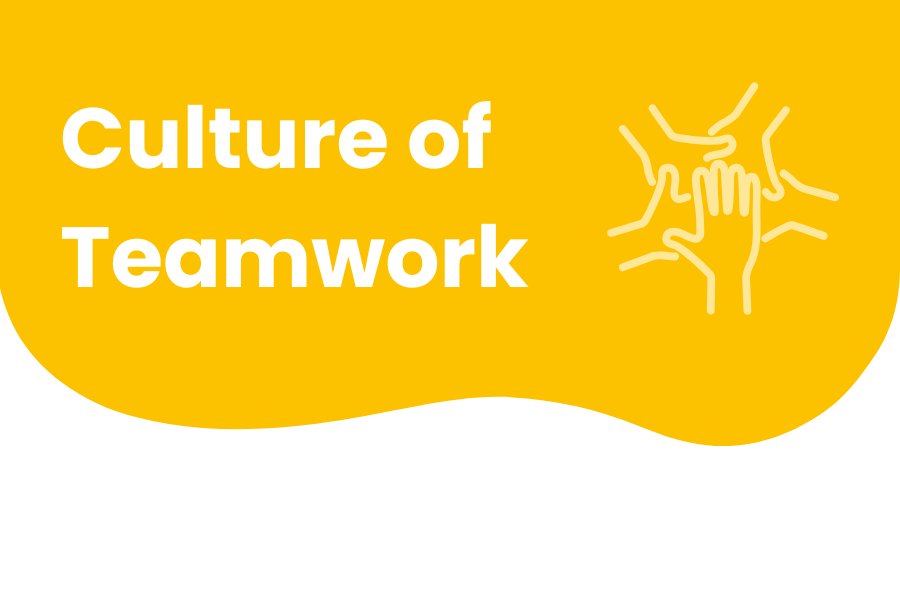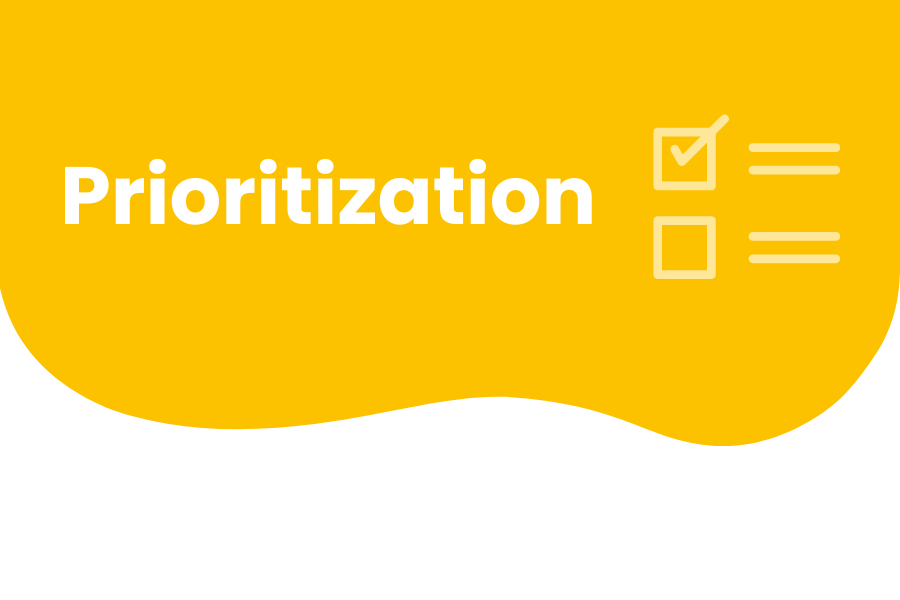Experiment Time: Problem-Solve with this Seven-Step Plan

Most businesses have had to navigate unchartered territory over the past few years. From grappling with a temperamental economy to constantly updating health and safety policies, leaders in all industries have put their problem-solving skills to the test.
Having an established process in place for problem-solving your company’s challenges - big or small - can be crucial for the health of a strong culture. And one of the most important things to remember when coming up with your own process is to make sure it’s transparent and accessible to the whole company.
We caught up with Brad Herrmann and Hai Nguyen, two of the founders of Text-Em-All, to learn about their tried and true process. And as a case study, we’ll look at a challenge they recently put through their process that has universal relevance: the question of hybrid work.

Step One: Call it an experiment
First, choose your words wisely. Change can be difficult, and so making it less intimidating is a good introduction. Herrmann credits Steven Wilkinson, founder of Good & Prosper Ltd., with helping them years ago to land on the label of “experiment”. Calling a potential solution an experiment takes the pressure off for everyone involved. An experiment connotes something that is temporary, malleable, and open to critique. Employees may more readily try something new, as well as provide honest feedback, knowing that it’s simply a trial run with an established end date, rather than the law of the land.
This was particularly important for deciding on a plan when it came to remote vs in-office work for the Text-Em-All team, as employees had strong opinions on what they wanted. After over a year of being fully remote due to the pandemic, the co-founders knew that they wanted their team back in the office at least partially to revive that in-person cultural energy, but they weren’t sure what the right formula was. So they turned it into an experiment.
“We’ve always been a ‘magic happens around the water cooler’ type company,” says Herrmann.
That may be true, but some of their employees, as well as the market, were putting pressure on the case for remote work. So, the co-founders did a lot of research, and communicated with their company.
Step Two: Set the expectations
While the whole point of this process is to reach a solution that’s effective and is representative of your company, it’s probably fair to say that not everyone on your team will be happy with the initial introduction of the experiment. And that’s okay. Reiterate that it’s just an experiment, and ask that everyone have faith in the process, and to give it a fair chance.
“The pandemic forced us to be this remote company,” says Nguyen. “During that year and a half of learning how to work remotely, we got really comfortable with that, and now we were nervous going back to the office. And so it’s an interesting spot to be in.”
When Herrmann and Nguyen initially collected everyone’s views on hybrid work, some people wanted to work in the office 5 days a week, while others wanted to remain fully remote, and everything in between. So it was clear from the start that not everybody would get their dream scenario, but the effort was being made to take everyone’s opinions into account.
Step Three: Give it time
Don’t rush through your experiment. Make sure you prepare appropriately, and allow it to play out long enough for everyone to form a well-rounded opinion of it.
For Text-Em-All’s challenge, it took about a year of research and observing what routes other companies were taking. For example, Herrmann came across one study published by Stanford that cited that women are more likely to choose to work from home. In addition, people who choose to go into the office are more likely to be promoted because they've developed more cross team relationships, which is exactly what is needed in higher-ranking roles.
“That’s really important to us, because we’re having this ongoing conversation about women in leadership,” says Herrmann. “And the last thing we want to do is put in a policy that is going to make it even worse.”
Herrmann also mentioned that it worked in their favor to watch other companies’ decisions on the same topic play out. Their deliberate inaction was another form of research, to see what did and didn’t work for others.
“Sometimes, it’s good to be decisive,” says Herrmann. “Other times, let other people follow the way the wind is blowing, and watch.”
Of course, not every challenge has the privilege of a lenient timeline, and not every challenge needs a year of research and discussion prior to going into the experiment phase (this was also partially forced upon them, as new Covid-19 variants kept them working remotely for safety reasons). It all depends on the scope of what you’re trying to solve for. As a general rule, try starting with a defined period of prep (perhaps a month), and then a period of experimentation, before jumping to any conclusions. And, as always, feel free to adjust accordingly.
The matter of where people conduct their work is a nuanced topic - it involves a lot of logistics, and it bleeds into employees’ personal lives. After plenty of discussions (most of the observations and feedback were discussed live during Text-Em-All’s weekly team meetings), the leaders decided on 3 days a week of in-office work, with two optional days to work remotely. They also decided that everyone would be in the office on the same days - after all, the whole point of being in person was to be together, developing those cross-departmental and cross-level relationships. Employees voted on Mondays and Thursdays as being the optional remote days.
The leaders gave all of the employees a heads up on when they would all return to the office, enough time for parents to figure out childcare, or those working from a vacation spot to return home. Herrmann said he knew the first couple of weeks back in the office would be chaotic, and that he wanted to make it as celebratory as possible. By the end of January 2022, everyone was back to the office. For the first two weeks, swag was put on everyone’s desks every morning, there were food trucks, and Nguyen even made everyone pancakes one morning (you’ve maybe heard of IHOP, and now you’ve heard of Hai-hop!). Also, everyone was given a $200 stipend to update their work spaces in whatever way they saw fit.
After the initial two weeks of celebrations and settling in, employees were asked to give the experiment a month to live in it before making any final decisions or judgements.
Step Four: Gather feedback
Now that you’ve let the experiment play out, it’s time to take notes. After the set amount of time that you established for the trial run, hold a retrospective meeting to discuss what is working well, what isn’t, and to come up with actionable solutions. This allows for everyone to have a say in the matter.
Additional tools can also be helpful for this step. At Text-Em-All, they enjoy using OfficeVibe, which allows for anonymous submissions. Typically, Nguyen runs their retrospectives live, but for this challenge, they used the project management tool Trello, to collect data and opinions and eventually make a more informed decision.
Of course, you do not need to wait until the retrospective to collect feedback. Weekly meetings, 1-1’s, or during some down time are all opportunities to casually get a sense of how people feel the experiment is going. The retrospective is there to provide an end date, as well as gather final thoughts, and vote on which items relating to the challenge deserve the most attention moving forward.
Step Five: Check it against your values
Now that you’re getting closer to reaching a conclusion with your experiment, you have to run it by another authority: your culture. Any decision you follow through on should fulfill or support your company’s values, and perpetuate the culture.
For example, a big part of Text-Em-All’s values is sharing skills and building relationships through mentorship. They heard from some of their newer engineers that it’s much easier to seek advice from a mentor while in the office. They can see a senior engineer taking a break to get a cup of coffee, and approach them then to ask a question; whereas when everyone’s remote, it’s harder to know when may be a good time to approach a mentor. Therefore, having everyone in the office on the same days was important to live out their values of community, growth, and relationship-building. It also helped to build cross-departmental relationships, and overall trust throughout the company.
Step Six: Conclude the experiment & move forward
After you’ve had all of the conversations, run the experiment, and had your retrospective meeting, it’s time to reach a decision. Some experiments might have an easy conclusion, such as a project or an apprenticeship. Others, you may be tweaking the experiment and turning it into a more long term solution. Regardless, be clear on your findings and how it will impact the company in the future.
For Text-Em-All, their experiment of 3 days a week in-office, with 2 optional days of remote work, received overwhelmingly positive feedback from the entire company. They also discovered that an unexpected bonus of the structure was the distribution of work. Now, meetings are mostly scheduled on Tuesdays, Wednesdays and Fridays, when everyone is together in person. And so, employees can more easily block out chunks of time for focused work on Mondays and Thursdays. This also capitalizes on their core value of building relationships and developing cross-departmental communication.
Step Seven: It’s okay if it’s not for everyone
Not everyone is going to be happy with the experiment, or the decision you make following it. This shouldn’t come as a shock to your employees, though, as this was already stated in Step Two. Nevertheless, it can be difficult to pursue a decision knowing some people will not be satisfied, but some challenges are too nuanced to make that possible.
However, if you handle the problem-solving process with both transparency and empathy, hopefully those who do not necessarily agree with the decision will at least respect it. And that goes back to building trust. Fortunately for Text-Em-All, they did not lose anyone based on their decision to remain three days a week in the office. But they were prepared to take on that risk if the situation did occur.
It’s okay if some people are no longer a good fit due to a decision that bolsters your company’s mission and values. It may mean that they are better suited elsewhere. But if you and your team followed through on all of the steps with due diligence and compassion, then there should be no hard feelings, but instead clarity and mutual respect.
Conclusion
Having an established problem-solving process like Text-Em-All’s can help take the stress and pressure out of big company-wide changes (as well as smaller ones). It also benefits the leaders of a company.
“It’s been a weight off my shoulders,” says Nguyen of having this problem-solving process. “It’s not like I have to come up with all the solutions. We can lay the challenges out for everybody and we can solve it together.”
Calling it an experiment, and making sure everyone is informed and has the chance to voice their feedback all leads to you reaching a solution that not only satisfies more people, but also reinforces your company culture.





Submit Your Comment